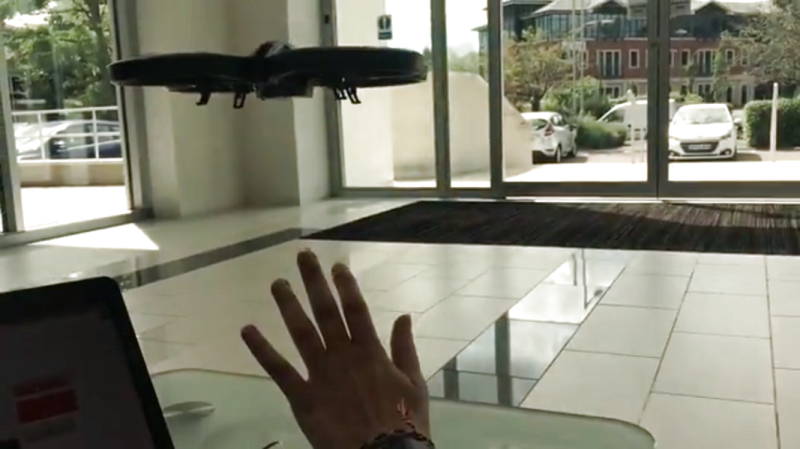One of the companion technologies in the developing field of augmented reality is gesture tracking. It’s one thing to put someone in a virtual or augmented world, but without a natural way to interact inside of it the user experience is likely to be limited. Of course, gestures can be used to control things in the real world as well, and to that end [Sarah]’s latest project uses this interesting human interface device to control a drone.
The project uses a Leap Motion sensor to detect and gather the gesture data, and feeds all of that information into LabVIEW. A Parrot AR Drone was chosen for this project because of a robust API that works well with this particular software suite. It seems as though a lot of the grunt work of recognizing gestures and sending commands to the drone are taken care of behind-the-scenes in software, so if you’re looking to do this on your own there’s likely to be quite a bit more work involved. That being said, it’s no small feat to get this to work in the first place and the video below is worth a view.
To some, gestures might seem like a novelty technology with no real applications, but they do have real-world uses for people with disabilities or others with unusual workflow that require a hands-free approach. So far we’ve seen hand gesture technologies that drive cars, help people get around in the physical world, and even play tetris.
















Here’s one real world application: a drone for military units in the field to search ahead with video being fed to a HUD in the pilots helmet. This would enable the pilot to control the done and still maintain control on his weapon.
I could think of many more in search and rescue and other fields.
Soon charging stations in high places for police controlled drones with Tasers and facial recognition systems can’t wait.
Lab view starts at $399 USD per year and goes up to $4999 USD.
Any FOS options that work?
Hi RandyKC, I’m sure that you could take control of Leap Motion sensors and AR Drones from most modern programming languages. However, the neat thing with LabVIEW is that free, readymade APIs for the technologies are available here https://www.labviewmakerhub.com/ which probably simplified the project a lot.
Also, FYI, LabVIEW Home (ie. the version for non-professional use) is $49.99
http://store.digilentinc.com/labview-home-bundle/
DJI Spark has gesture control. Some argue that it doesn’t work as advertised, but it does work!
Has’n t been mass released only about three days ago????
Yeah, so? National instruments had years to do this, and their intern set it up _after_ DJI had a big splash on social media about the Spark (compare the dates, June 14th for the NI, May 24th for the Spark).
Simple, but innovative, merging of unrelated technologies. Nice work!